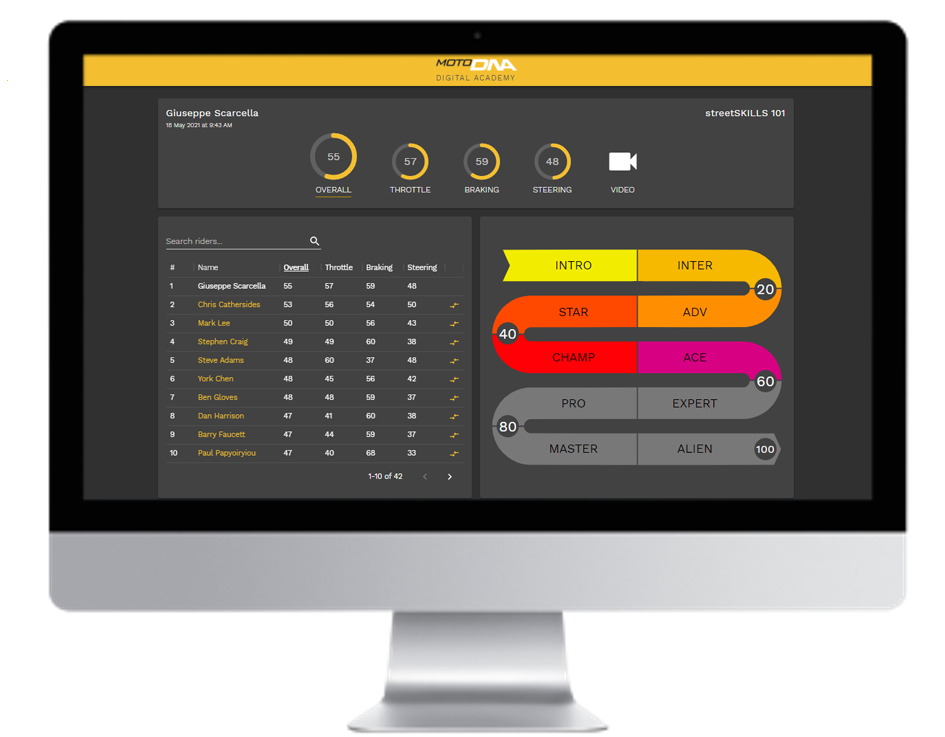streetSKILLS 101 – Braking with data
streetSKILLS 101 is a new training product, data driven by motoDNA Digital Academy, that fast tracks your core skills and help reduce your risk on the street.
This reel shows skilled riders data from their emergency stops.
Welcome to motoDNA, today we’re talking about a new way of learning motorcycle skills. I’m Mark McVeigh, I’ve been riding safely on the road and racing on track for 35 years. After working as a Moto GP engineer, I founded the motoDNA motorcycle school in Australia. Today I run the motoDNA Digital Academy, online and data driven, teaching riders all over the world. Skill is a huge part of riding a motorcycle, together with craft, and mind. The higher your skill level the better equipped you are to react safely to hazards on the road.
What is a Skilled Rider?
So, what does a skilled rider look like? To find out let’s look at braking data for emergency stops.
So if we go into the motoDNA Digital Academy and we select a rider, we open up the dashboard, and then we can select the braking data.
So you can see two lines here on a graph, the vertical axis is the g-force up to 1.2 G, and this is basically the rate of de-acceleration and equates to your brake pressure.
On the horizontal is the distance, the stopping distance in meters.
The two lines here, the green is the instructor reference line and the yellow is the student.
1 – Rate of Application
So things to consider, first thing is the rate, which is how quickly you can apply your brake pressure.
You can see the instructor has a very steep rate so they’re very quickly gone from zero to high brake pressure. Comparably the student, their line is a lot flatter, so their rate of application is much lower.
2 – Progressiveness
The second thing to consider is how progressive your braking is, which means increasing your braking pressure until you come to your stop. So you can see here with the instructor they’re increasing the brake pressure the whole way until they come to a stop.
If you look at the student they’re increasing the brake pressure, increasing, increasing until this point and then they sort of ease off the brake a little bit and then start applying the brake pressure again.
So this actually adversely affects your grip by unloading the tyre, so it’s very important to be progressive.
3 – Peak Value
The next thing to look at is the peak value, so you can see here that the instructor is at 1.2 G and the student is kind of around 0.7 of a G.
Most bikes are capable of the deceleration at over 1 G, however the data shows most riders cannot match their bike’s ability.
4 – Smoothness
The next thing to look at is smoothness, so not being jerky on your brakes.
Okay so you can see clearly here the instructor is very smooth and the student is not so smooth, it’s quite jerky so again this is no good for slowing the bike down.
Remember it takes 10 000 hours to master any skill. Sign up at motordna.com to learn more
Data Driven
Developed from thousands of riders at the motoDNA Motorcycle Training, our algorithms measure, grade and train motorcycle riders.
Objective
No more guessing, data sensor fusion combined with our algorithms deeply understand rider behaviour.
Towards Zero
Our urgent and ambitious aim is to empower the motorcycle community to take back control towards zero.


